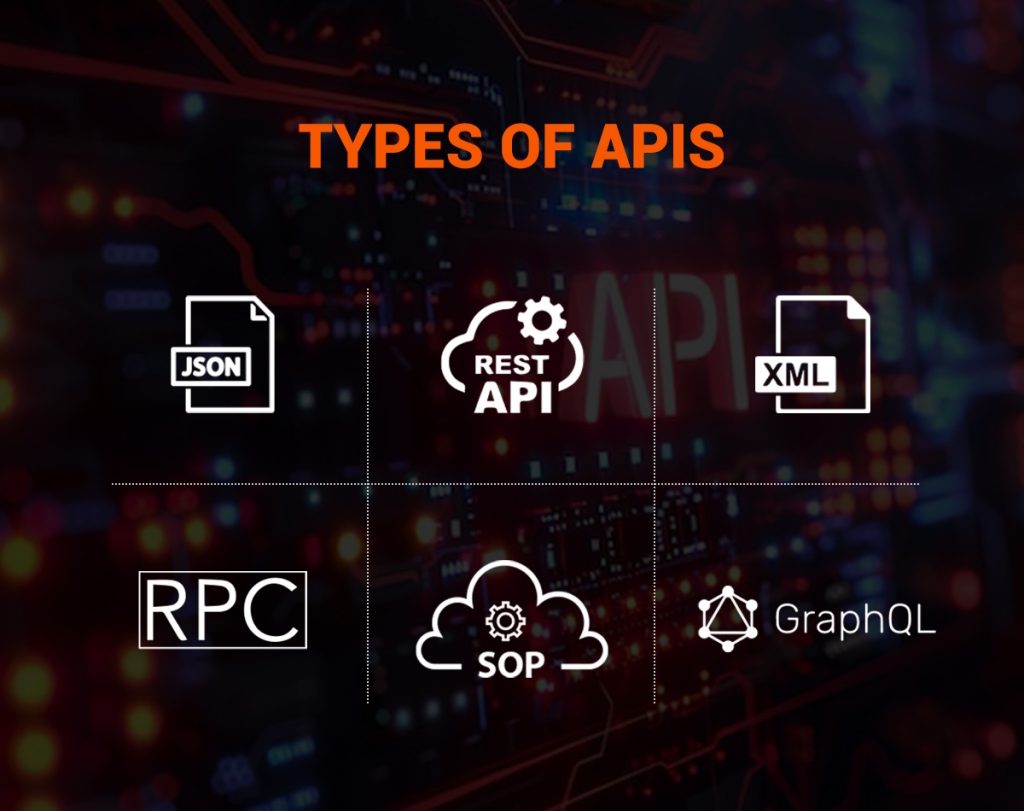Imagine you’re using a fitness app that seamlessly pulls data from your smartwatch and shares your progress on social media. How does this magic happen? It’s all thanks to API integration! An API, or Application Programming Interface, is a tool that enables different software systems to interact and collaborate. This invisible force connects your favourite tools, making your online experiences smoother and more efficient.
Let’s get started!
What is API Integration?
API integration connects two or more applications through their APIs (Application Programming Interfaces), allowing them to share data and work together. This integration enhances processes across various sectors and levels of an organization by synchronizing data, boosting productivity, and driving revenue.
APIs are fundamental to nearly every digital interaction. Regardless of a business’s size or industry, APIs ensure smooth operation and effective performance of applications and web systems.
For instance, your weather app retrieves the latest updates from the news bureau’s API without understanding how the API functions internally. Similarly, apps like Zomato use APIs to display restaurant locations on Google Maps without requiring knowledge of the internal location-determining processes.
To achieve optimal and automated business processes that seamlessly share and interact with critical data, API integration is essential.
How Does API Integration Work?
It involves using either an in-house or third-party solution to enable application communication through their APIs. Once these applications are linked, they can seamlessly request and exchange data with each other, effectively removing any data silos within your organization.
For instance, if you use Salesforce as your CRM and Marketo for marketing automation, API-based integration allows you to connect these systems. This setup ensures that crucial information flows between them without any hassle. For example, if a sales rep updates a prospect’s status in Salesforce, that change will be instantly reflected in Marketo. Similarly, if a prospect’s lead score is adjusted after a Marketo campaign, the updated score will automatically update in the corresponding Salesforce account, and vice versa.
Market Size
The API Management Market, valued at USD 4.50 billion in 2022, is projected to increase significantly, reaching USD 5.63 billion in 2023 and soaring to USD 33.77 billion by 2031. This growth reflects a robust CAGR of 25.1% from 2024 to 2031.
Why is API Integration Necessary?
API connectivity allows applications to exchange data and interact with each other automatically, eliminating the need for human intervention. Organizations can streamline system automation, facilitate smooth data sharing, and integrate existing applications by connecting web tools or applications through their APIs.
Enterprises must recognize the crucial role of API integration. With the rise of cloud-based products and applications, businesses need to establish interconnected systems where data flows seamlessly between various software tools. API integration enables this by automatically sharing processes and data within a given ecosystem.
APIs enhance information and service delivery flexibility, making it easy to embed content from various sources and applications. They serve as the interface that allows two applications to work together seamlessly.
Types of APIs and Related Terms
APIs (Application Programming Interfaces) allow different software applications to communicate with each other. Here are some common types of APIs:

- REST
REST, or Representational State Transfer, is an architectural software style used in web service development. It relies on HTTP requests to perform operations such as retrieving, updating, creating, and deleting data. Typically, REST APIs return data in JSON (JavaScript Object Notation) format, which is a lightweight and easily readable way to handle data.
- SOAP
SOAP, or Simple Object Access Protocol, is a standardized protocol for web services, whereas REST is an architectural style used for designing networked applications. SOAP uses XML for data representation, with the data structure usually specified in a WSDL (Web Services Description Language) document. The WSDL file provides a clear and detailed definition of how to interact with the web service. However, SOAP’s strict structure leaves little room for error and can make integration complex.
- XML
XML, or Extensible Markup Language, is a markup language like HTML, but it allows you to create custom tags. This allows you to create custom tags tailored to your specific needs. XML is valid for storing, searching, and sharing data.
- JSON
JSON, or JavaScript Object Notation, is widely used for data transmission in web applications. The text-based format represents structured data based on JavaScript object syntax.
- RPC
RPC, or Remote Procedure Call, is one of the earliest forms of APIs. It enables the execution of code on a different server. When used over HTTP, RPC can be utilized as a Web API.
- GraphQL
GraphQL is an open-source query language and runtime for APIs. It allows clients to request the data they need precisely while avoiding unnecessary information, making it easier to adapt APIs over time. GraphQL also provides a comprehensive and clear description of the data available in your API, along with robust developer tools.
API integration Examples
API integrations are omnipresent, driving the digital experiences that enable us to work, travel, make payments, and connect. To better grasp how they function, consider the following examples:
Social Media Integrations: Many apps link with social media platforms like Facebook, Twitter, and LinkedIn to facilitate content sharing, target advertising, and track brand engagement. For example, a digital media company might use social media integrations to allow users to share articles on Twitter or LinkedIn, boosting visibility effortlessly.
Payment Integrations: E-commerce sites use payment integrations to process transactions securely through third-party platforms such as Stripe or Square. These APIs are crucial for safely transferring sensitive customer information, like credit card details. They help minimize risk by ensuring compliance with regulations without the need to develop new solutions from scratch.
Geolocation Integrations: Applications needing real-time tracking, such as ride-sharing or delivery services, often incorporate geolocation or mapping APIs. For instance, a food delivery service might use Google Maps to let users track the progress of their orders. These integrations provide essential functionality while allowing teams to focus on developing new features.
Messaging Integrations: Integrations with messaging platforms like Slack and Twilio enhance team collaboration and streamline workflows. For example, development teams might connect their Application Performance Monitoring (APM) tool with Slack to receive automated alerts about issues like increased latency.
Cloud Service Integrations: Providers like Amazon Web Services (AWS), Microsoft Azure, and Google Cloud Platform (GCP) offer APIs that enable customers to integrate their services and build scalable, cloud-based systems. For instance, Amazon Simple Storage Service (S3) offers RESTful APIs and SDKs for efficient file storage and management.
Enterprise Software Integrations: Many enterprise systems, such as ERP (Enterprise Resource Planning), CRM (Customer Relationship Management), and HR management platforms, feature APIs that automate workflows. For example, integrating CRM and ERP systems can enhance visibility into customer orders and inventory while streamlining order fulfilment and payment processing.
Choose Nirvana Lab for API Integration
Choose Nirvana Lab for superior API integration. Our team excels in integrating Liferay for tailored digital experiences, Talend for versatile data and application connectivity, and Salesforce for a seamless CRM experience. We ensure smooth AWS migrations, addressing risks and automating processes for optimal cloud transitions. Nirvana Lab’s integration services accelerate your digital transformation by leveraging advanced frameworks and accelerators.
Our structured approach to vendor selection, detailed assessments, and best-practice architecture design will optimize your integration landscape, driving efficiency and modernization. Trust Nirvana Lab to enhance your technology integration and support your digital evolution.
Frequently Asked Questions
What is API integration?
API integration involves connecting two or more applications through their APIs (Application Programming Interfaces), allowing them to share data and work seamlessly. This connection enhances various processes across different sectors, improving overall productivity and efficiency by ensuring that applications can communicate and operate as a cohesive unit.
How does API integration work?
API integration works by utilizing in-house or third-party solutions to enable application communication through their APIs. Once these applications are connected, they can exchange data automatically, which helps eliminate data silos and ensures that critical information flows smoothly between systems without requiring manual input.
Why should I choose Nirvana Lab for API integration services?
Choosing Nirvana Lab for API integration services means partnering with experts specializing in integrating technologies like Liferay, Talend, and Salesforce to create tailored digital experiences. We ensure seamless AWS migrations, automate processes and adhere to best practices to optimize your integration. Our structured approach and deep expertise will enhance your technology integration and effectively support your digital transformation goals.
Why is API integration important for businesses?
API integration is vital for businesses because it automates data exchange and interaction between applications, reducing the need for human intervention. This automation streamlines workflows, facilitates smooth data sharing and integrates existing applications, which is crucial for maintaining efficiency and effectiveness in a highly interconnected digital landscape.
What are the different types of APIs?
There are several types of APIs, each serving different purposes. REST APIs rely on HTTP requests to perform operations and usually return data in JSON format. SOAP APIs use XML for data representation and are defined by a WSDL document. XML APIs allow for custom tag creation to store and share data, while JSON APIs use a text-based format for data transmission. RPC APIs enable code execution on different servers, and GraphQL APIs allow clients to request specific data and provide a detailed description of available information.
